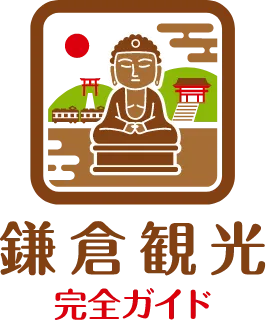Jochi-ji Temple (浄智寺)
Discover Jochi-ji Temple (浄智寺)
Jochi-ji Temple is a tranquil Zen temple of the Engaku-ji School (円覚寺派) of the Rinzai sect, nestled in the lush northern valley of Kamakura. It was founded in the late 13th century by the wife and elder brother of Hojo Munemasa (北条宗政), a young samurai who died prematurely. Although his son, Hojo Morotoki (北条師時), is officially listed as the founder, he was still a child at the time. Ranked fourth among the “Five Great Zen Temples of Kamakura” (鎌倉五山), Jochi-ji Temple was once part of a magnificent temple complex, much of which was lost to fire and the Great Kanto Earthquake. What you see today has been carefully restored.
Architectural Highlights and Natural Beauty
At the entrance stands the two-story Shoro-mon Gate (鐘楼門), a rare structure combining a main gate on the lower level and a belfry above. Its design features traditional Song dynasty Chinese architectural elements, including elegant cusped windows known as katō-mado (花頭窓). Rebuilt in 2007, it’s now a favorite spot for photographers. In the main hall, Dongen-den (曇華殿), sit three serene Buddha statues—Amida Nyorai (阿弥陀如来), Shaka Nyorai (釈迦如来), and Miroku Nyorai (弥勒如来)—believed to date from the late 14th to mid-15th century. Behind the temple, visitors can find a stone statue of Hotei (布袋尊), the god of happiness. Gently rubbing his belly is said to bring luck and vitality.
Spiritual Significance and Cultural Legacy
Jochi-ji Temple is a living expression of Kamakura-era Zen philosophy. Worshipping the Three Buddhas represents a prayer for purification across past, present, and future. The Hotei statue is part of the popular “Kamakura-Enoshima Seven Lucky Gods” pilgrimage (鎌倉江ノ島七福神めぐり). Another highlight is Kanro-no-I (甘露ノ井), a sacred spring counted among the “Ten Famous Wells of Kamakura” (鎌倉十井) and known for its pure waters.
Seasonal Events and Tranquil Experiences
Every second Saturday in November, the temple holds its annual “Photo Memorial Gratitude Ceremony” (Shashin Kuyo Kanshasai), where printed photographs are ritually burned as a gesture of farewell and gratitude. Wandering through the peaceful temple grounds offers a quiet moment for reflection—one of the most cherished experiences here.
How to Get There from Tosh’s Place (トシズプレイス)
From Tosh’s Place (トシズプレイス), Jochi-ji Temple is about a 20-minute walk through a quiet residential area. The temple is open daily from 9:00 AM to 4:30 PM. Mornings are especially serene, making it an ideal stop before breakfast. The self-catering style of Tosh’s Place allows guests the freedom to explore Kamakura at their own pace.
When Is the Best Time to Visit?
Jochi-ji Temple is beautiful year-round: cherry blossoms in spring, lush greenery in summer, fiery foliage in fall, and a peaceful stillness in winter. Spring and autumn are especially popular for photography. Visiting early in the morning or later in the afternoon—when crowds thin—offers a deeper sense of stillness.
Photo Highlights and Must-See Spots
Nearby, you’ll find scenic hiking trails and historical paths ideal for a leisurely walk. The area also features charming traditional cafés and restaurants serving local cuisine. This quiet district once attracted cultural icons like Yasujirō Ozu and Tatsuhiko Shibusawa, whose gravesites remain in the vicinity.
Embrace the Quiet Hours of Morning
This temple is perfect for:
- Those seeking inner calm at a historic Zen site
- Lovers of seasonal landscapes and classic Japanese architecture
- Photographers looking for quiet, atmospheric locations
- Guests with flexible morning or evening schedules
For travelers staying at Tosh’s Place (トシズプレイス), the walkable access and relaxed pace make Jochi-ji Temple an ideal destination to experience Kamakura like a local.
Wrap-Up: Jochi-ji Temple and a Local Way to Experience Kamakura
Jochi-ji Temple offers a rare chance to immerse yourself in Kamakura’s quiet, natural beauty and centuries-old Zen teachings. Use your free time in the early morning or evening to experience a side of Kamakura that day-trippers often miss—a place to reflect, reset, and reconnect.es-old Zen teachings. Use your free time in the early morning or evening to experience a side of Kamakura that day-trippers often miss—a place to reflect, reset, and reconnect.
